Friends of Rio Vista distributes bimonthly bulletins via email and publishes key information from these bulletins here. To start receiving our bulletins, sign up here.
In this issue, we focus on the Rio Vista Weed Watchers Project, an initiative to tackle the looming threat of invasive plant species. Jump to the Resources section to see how you can can be part of this effort »
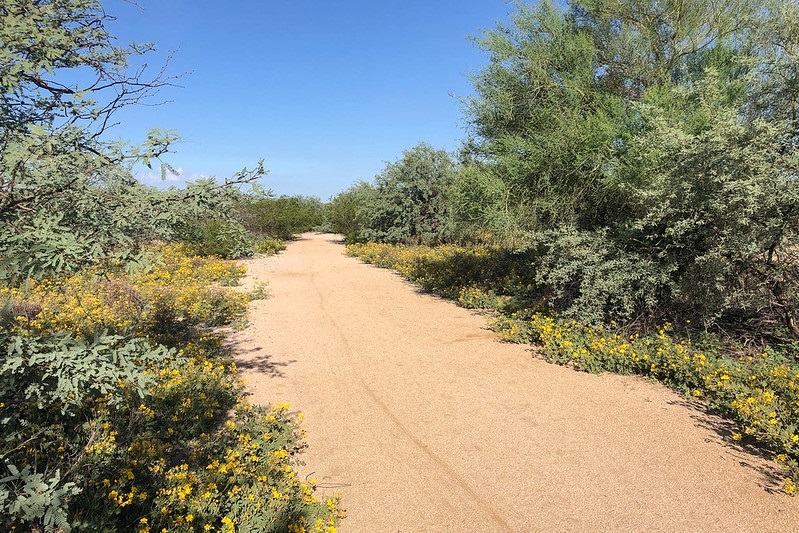
The Rio Vista Weed Watchers Project
Good news for Rio Vista’s native plants, bad news for invasives: Friends of Rio Vista has launched the Rio Vista Weed Watchers Project!
The Dangers of Invasive Plants at the Park
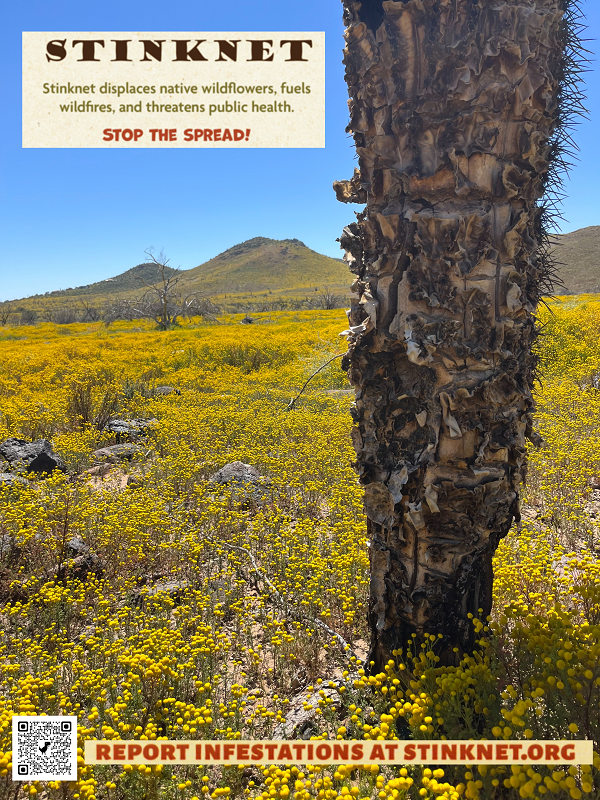
You probably know the criteria that define an invasive plant species: it’s not native, and it causes harm. The invaders may outcompete native species for resources like water, or they may create conditions that put the landscape at risk for extensive fires — to which invasives are adapted but native plants are not.
Rio Vista has not been spared the encroachment of invasive plants, from low-growing species like London rocket (a mustard; Sisymbrium irio) to trees like African sumac (Searsia lancea). The Rio Vista Weed Watchers Project focuses on three species that are likely to be most dangerous for the park’s native plants: stinknet (Oncosiphon piluliferum), buffelgrass (Cenchrus ciliaris), and fountain grass (Cenchrus setaceus). The project will also keep tabs on other troublesome species like African sumac and lantana (Lantana).

Partnership in Action
The Rio Vista Weed Watchers Project is a collaboration among Friends of Rio Vista, Tucson Bird Alliance (formerly Tucson Audubon Society), the Arizona-Sonora Desert Museum, and the Pima County Cooperative Extension housed at the University of Arizona. The project will locate and map invasive plants in the park and is powered by trained volunteers. Friends of Fort Lowell Park is exploring the potential for a parallel project at their park.
Friends of Rio Vista has held two training sessions for volunteers: one on March 19 and one on March 22. Fourteen volunteers (including Gary Bachman, who leads the project) have signed up, and 13 have been trained so far. One of the trainees is a representative of Friends of Fort Lowell Park. Trainers were Ben Tully (Pima County Cooperative Extension), Perry Grissom (Arizona-Sonora Desert Museum), Jay Snowdon (Tucson Bird Alliance), and Gary. We’re grateful to the Tucson Parks and Recreation Department for providing meeting space for both sessions at the park.
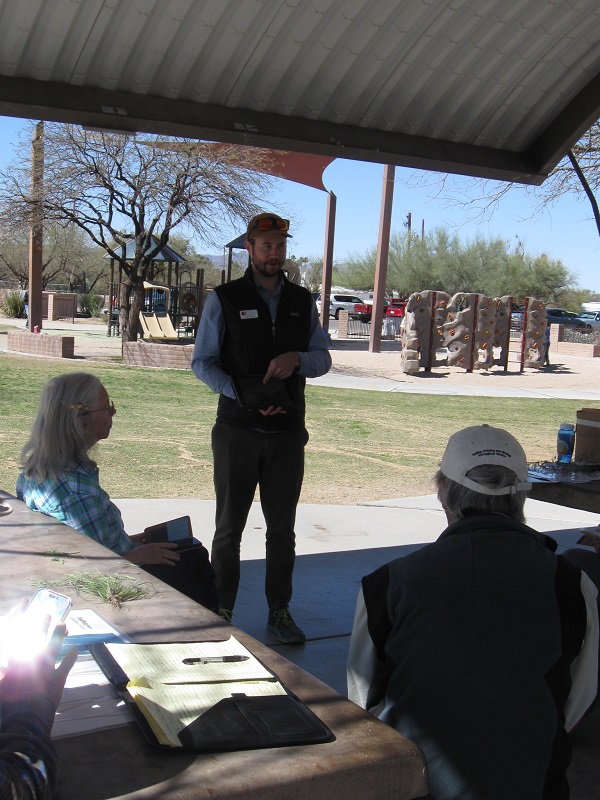
Observation and Elimination
Volunteers will report stinknet observations on the stinknet.org website managed by Tucson Bird Alliance. We’re coordinating the data-collection and data-reporting methods for other invasives with the Tucson Parks and Recreation Department and our project partners. We hope that, because of the lack of winter rains, we won’t see stinknet in the park this year — but volunteers will be vigilant nevertheless.
Ben, Perry, and Jay have outlined protocols for removing individuals or stands of invasive species, once identified. Details of these protocols are important for the safety of both the native plants that are being protected and the volunteers or staff pulling the plants. For example, buffelgrass must be tightly bagged so that seeds won’t be accidentally dispersed, and gloves are necessary for removing stinknet, to prevent contact with noxious chemicals that the plant produces.
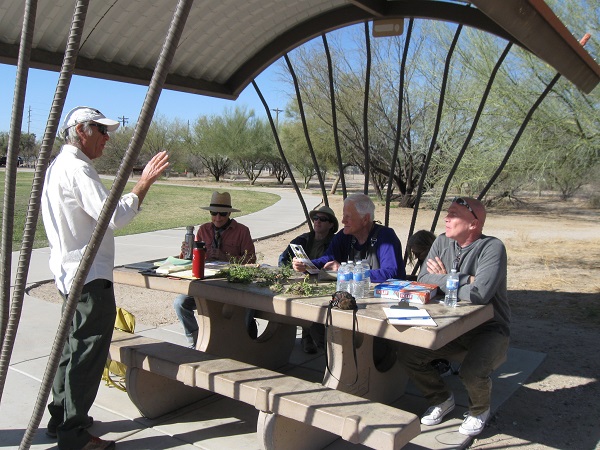
What You Can Do to Combat Invasives
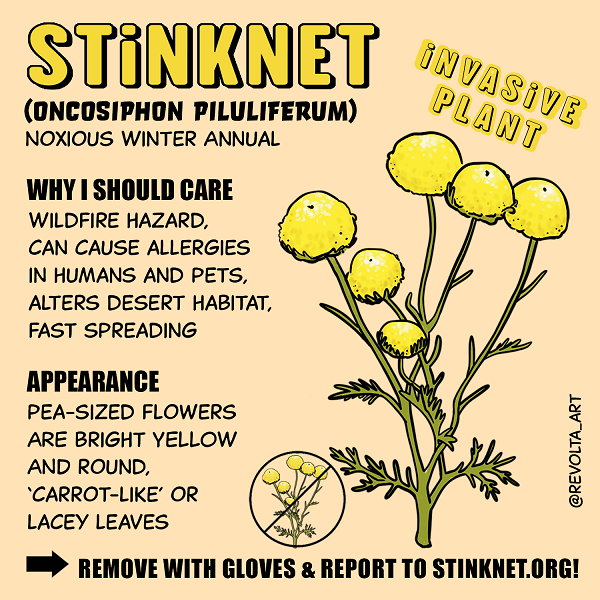
Some invasive plants, like buffelgrass, are already so widespread in the Tucson area that the goal for control is management and mitigation. But for stinknet, a goal of eradication is still within reach. (To see disturbing photos of out-of-control stinknet in the Phoenix area, check out this article in High Country News.)
Many thanks to the Weed Watchers volunteers, project lead Gary Bachman, and our partners (including Tucson Parks staff) for making this project possible. You, too, can contribute to keeping invasive plants in check — not only at Rio Vista but also in your neighborhood or your own yard. You can report sightings of stinknet (with photographs) at stinknet.org, and you can learn more about stinknet and other invaders through the resources listed below. Please pitch in — and spread the word to your neighbors and friends. Thank you!
